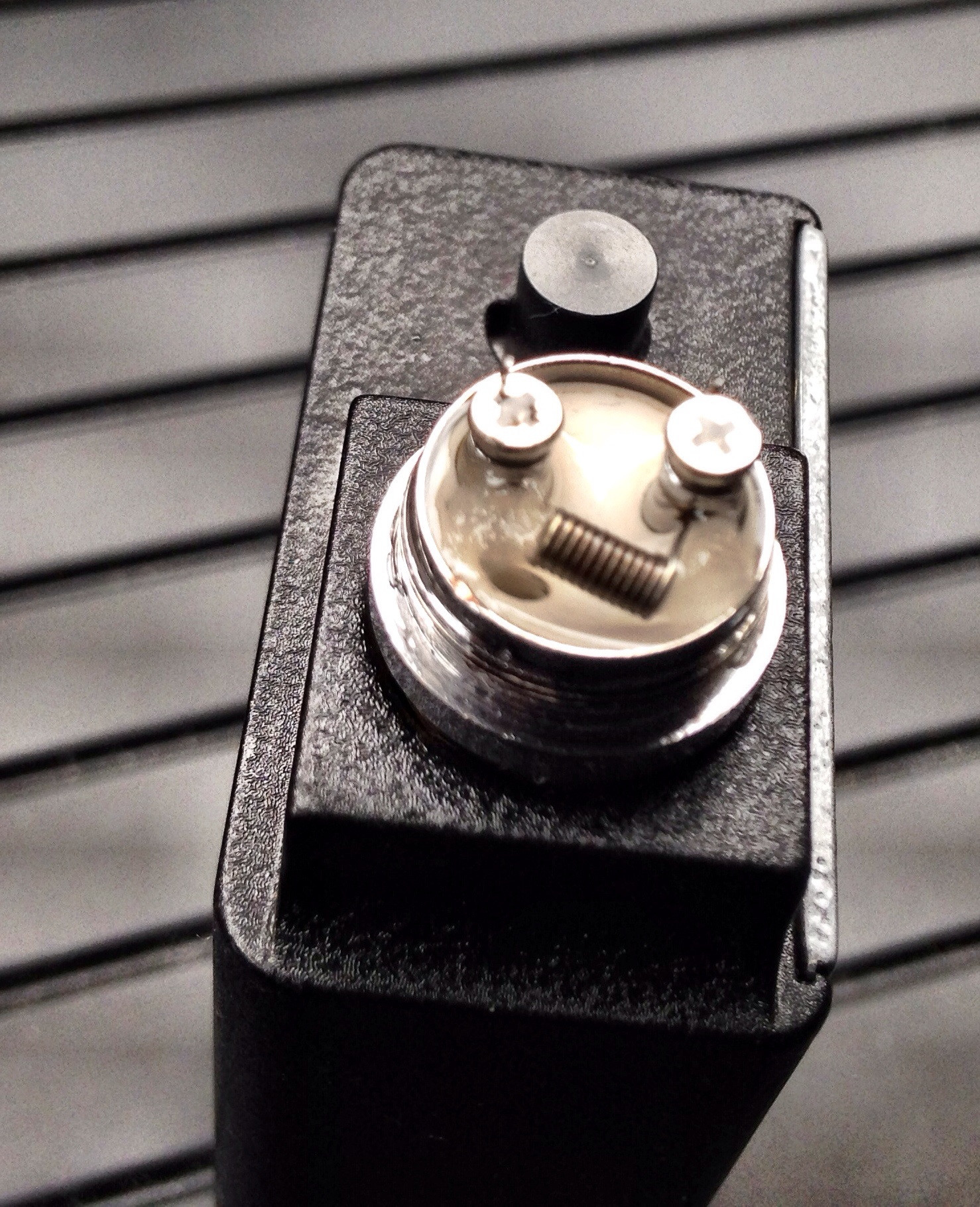My initial, and current view is that their superiority simply comes from the fact that the highly compact coil (in both diameter and wrap spacing) will hold the heat better than a larger diameter, spaced coil.
I've seen some people suggest that micro coils offer superior performance because the touching coils allow the current to pass straight across the coil, instead of around the coil, lowering the resistance but still maintaining very high surface area.
This really made no sense at all to me, and I'll tell you why:
Look at your coil. Now take a piece of kanthal that is the same length as your coil (probably 1/8" to 1/4" long depending on your wraps. Now measure the resistance of that piece of kanthal. What is it? .1 ohms if that? (again, varying depending on wire)
Now compare the thickness of that single piece of kanthal, to the thickness of the metal "tube" that is the microcoil. If current was being passed directly from one wrap to another across the coil, as some suggest, micro coils would meter under .1ohm. Obviously that isn't the case.
Another thing to consider, is that it seems highly unlikely that you are going to be able to get every single last bit of surface area between the coils to be touching each other in an even, complete way. Without doing that, some wraps will pass current directly to the next one instead of around it, while others will pass around, leaving a mess of hot spots (assuming current is actually being passed wrap to wrap)
I took out my attys with microcoils, checked the resistance. Then using a dental pick I ever so slightly pulled the coils apart to ensure zero touching. Checked the resistance again, an no changes on any of them (well, no changes within the ability of a zmax to detect) Seems pretty conclusive that at least MY builds are not passing current directly from wrap to wrap, yet still retain all the advantages of a microcoil.
I'm not trying to attack anyone's ideas here, when I hear something that puzzles me I just have to bring it up. What say the MC junkies here?
I've seen some people suggest that micro coils offer superior performance because the touching coils allow the current to pass straight across the coil, instead of around the coil, lowering the resistance but still maintaining very high surface area.
This really made no sense at all to me, and I'll tell you why:
Look at your coil. Now take a piece of kanthal that is the same length as your coil (probably 1/8" to 1/4" long depending on your wraps. Now measure the resistance of that piece of kanthal. What is it? .1 ohms if that? (again, varying depending on wire)
Now compare the thickness of that single piece of kanthal, to the thickness of the metal "tube" that is the microcoil. If current was being passed directly from one wrap to another across the coil, as some suggest, micro coils would meter under .1ohm. Obviously that isn't the case.
Another thing to consider, is that it seems highly unlikely that you are going to be able to get every single last bit of surface area between the coils to be touching each other in an even, complete way. Without doing that, some wraps will pass current directly to the next one instead of around it, while others will pass around, leaving a mess of hot spots (assuming current is actually being passed wrap to wrap)
I took out my attys with microcoils, checked the resistance. Then using a dental pick I ever so slightly pulled the coils apart to ensure zero touching. Checked the resistance again, an no changes on any of them (well, no changes within the ability of a zmax to detect) Seems pretty conclusive that at least MY builds are not passing current directly from wrap to wrap, yet still retain all the advantages of a microcoil.
I'm not trying to attack anyone's ideas here, when I hear something that puzzles me I just have to bring it up. What say the MC junkies here?

